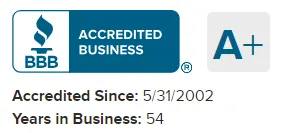Spa maintenance is not only about ensuring the longevity of your investment but also about creating a relaxing and enjoyable experience. Whether you’re a spa owner or someone who enjoys a spa visit, this comprehensive guide will provide insights and tips for effective spa maintenance. We’ll cover everything you need to know, from the basics to expert-level strategies. So, let’s dive in!
Introduction
The Importance of Spa Maintenance
Spa maintenance service is not a mere routine; it is an indispensable practice that revolves around creating and sustaining a safe, pleasurable environment for spa enthusiasts. Neglecting the essential aspects of maintenance can give rise to a myriad of issues, including water contamination, equipment breakdowns, and a reduction in energy efficiency. In this extensive discussion, we delve deeper into the critical facets of spa maintenance:
1- Water Quality Management
The foundation of a well-maintained spa lies in its water quality. Managing the water’s chemical balance is of paramount importance for sustaining a safe and enjoyable spa experience. To ensure the utmost satisfaction of your spa-goers, it is imperative to regularly monitor and adjust the levels of pH, alkalinity, and sanitizer in the spa water.
2- Cleaning and Hygiene
Maintaining the highest standards of cleanliness and hygiene within the spa environment is not merely a choice but a non-negotiable requirement. This unwavering commitment to cleanliness extends to every nook and cranny, from the spa’s shell to its jets and filters. The application of good hygiene practices is not merely a suggestion but an essential element in ensuring a safe and enjoyable spa experience, and it is a responsibility that should be upheld with utmost diligence.
3- Equipment Inspection
Vigilance in equipment inspection is vital for the longevity and reliability of your spa. All spa components, such as pumps, heaters, filters, and more, should be subject to regular scrutiny. The detection of any signs of wear and tear should serve as an immediate call to action to rectify the issue and prevent it from evolving into a more extensive problem. This proactive approach to equipment maintenance is essential for uninterrupted spa operations and the safety of your patrons.
4- Energy Efficiency
Spa Maintenance Checklist

Spa maintenance is all about “ensuring a clean and efficient spa experience.” To achieve this, it’s essential to understand the key aspects of spa upkeep and ensure that every detail is meticulously addressed to enhance the longevity and performance of your spa.
1- Spa Maintenance Schedule
Creating a meticulously detailed and comprehensive spa maintenance schedule is the foundational cornerstone of a successful spa maintenance routine. Your schedule should encompass a comprehensive list of tasks and their specific intervals to guarantee that you don’t miss crucial maintenance procedures. This meticulous planning ensures that you can enjoy your spa trouble-free, with no unexpected hiccups along the way.
2- Chemical Balancing
Properly balancing chemicals in your spa’s water is a delicate and precision-driven task that demands the utmost attention. To achieve the perfect chemical balance, it is imperative to employ specialized testing kits, adhere closely to recommended guidelines, and maintain a vigilant eye on your spa’s water chemistry. This precision ensures not only the safety of your spa but also the comfort and health of those who use it.
3- Water Filtration
Effective water filtration is the linchpin of a clean and safe spa environment. It is of paramount importance to establish a rigorous routine for the regular cleaning and replacement of filters. These actions are vital to maintain the highest water quality standards, ensuring that the water remains crystal clear and free from contaminants that can compromise the spa experience.
4- Cleaning Techniques
Mastery of the best cleaning techniques for your spa’s shell and interior components is an art that transcends mere aesthetics. While enhancing the spa’s appearance is undoubtedly a valuable outcome, it’s equally vital for the prevention of harmful bacteria growth that can pose health risks to users. Employ the most effective cleaning methods to maintain a hygienic and visually appealing spa environment.
5- Troubleshooting Common Issues
Being well-prepared to troubleshoot common spa issues is not just a skill but a potential lifesaver. Familiarize yourself with common problems such as leaks, temperature fluctuations, or malfunctions. This knowledge empowers you to swiftly diagnose and rectify issues, ultimately saving you both time and money in the long run.









